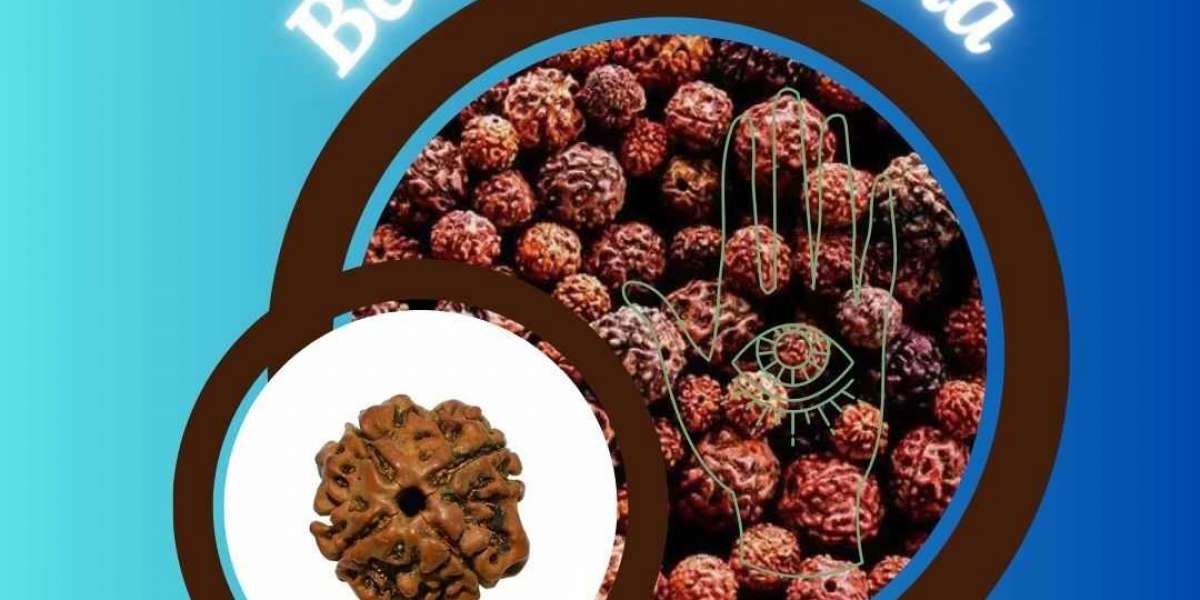Rudraksha beads, often revered as sacred elements in Hinduism and other spiritual practices, hold a special place in the realm of alternative therapies and holistic wellbeing. These unique seeds from the Rudraksha tree are believed to possess powerful energy and spiritual significance. This article delves into the history, significance, and purported benefits of Rudraksha beads in enhancing various aspects of life and promoting overall wellbeing.
Origin and Significance of Rudraksha
Rudraksha mala beads are the seeds of the fruit from the Rudraksha tree, scientifically known as Elaeocarpus ganitrus. The tree is predominantly found in the Himalayan region, Indonesia, Nepal, and certain parts of Southeast Asia. In Hinduism, Rudraksha is associated with Lord Shiva and is considered a symbol of his benevolence and compassion.
The Different Types of Rudraksha Beads
Rudraksha beads come in various mukhi or face numbers, ranging from single-faced (ek-mukhi) to twenty-one-faced (ikshaw-mukhi). Each type is believed to have unique properties and benefits. Here's a brief overview:
1. Ek-mukhi (One-faced) Rudraksha
- This rare bead is associated with pure consciousness and is believed to bestow spiritual enlightenment and liberation.
2. 5 Mukhi (Five-faced) Rudraksha
- The most common type, it represents the five elements and is believed to enhance overall wellbeing and spiritual growth.
3. Sapta-mukhi (Seven-faced) Rudraksha
- Associated with Goddess Lakshmi, this bead is believed to bring wealth and prosperity.
4. Dwadasha-mukhi (Twelve-faced) Rudraksha
- Linked to Lord Sun, it is believed to enhance charisma, confidence, and leadership abilities.
5. Triodasha-mukhi (Thirteen-faced) Rudraksha
- This bead is believed to bring good fortune and is associated with Lord Kamdev.
6. Chaturdasha-mukhi (Fourteen-faced) Rudraksha
- Associated with Lord Hanuman, it is believed to bestow strength, courage, and protection.
7. Gauri Shankar Rudraksha
- Comprising two naturally joined beads, it symbolizes the union of Shiva and Shakti, and is believed to strengthen relationships.
The Energetic Properties of Rudraksha Beads
Rudraksha mala beads are believed to emit a specific frequency of electromagnetic waves, which interact with the individual's own energy field. This is thought to have several positive effects on the wearer:
1. Enhanced Meditation and Spiritual Growth
- Benefits of Rudraksha beads are believed to aid in meditation by creating a conducive energy field. They are said to help calm the mind, improve concentration, and facilitate spiritual experiences.
2. Stress Reduction and Emotional Balance
- Wearing Rudraksha beads is believed to have a soothing effect on the nervous system, reducing stress levels and promoting emotional stability.
3. Physical Wellbeing
- Different types of Rudraksha beads are believed to have specific effects on the body. For example, the 5 mukhi Rudraksha is associated with overall physical health, while the seven-faced bead is believed to aid in healing.
4. Enhanced Intuition and Perception
- It is believed that Rudraksha beads can heighten one's intuitive abilities and perception, allowing for greater insight and clarity in decision-making.
5. Protection and Warding Off Negative Energies
- 3 mukhi Rudraksha benefits beads are often used as protective talismans. They are believed to create a shield against negative energies and entities.
Stringing the Rudraksha Mala
Once you've selected the Rudraksha Bracelet beads, it's essential to string them correctly to create a harmonious and effective mala.
1. Selecting Additional Beads
In addition to 2 mukhi Rudraksha benefits beads, you may want to incorporate spacer beads, also known as "counter" beads. These beads serve as markers, aiding in keeping track of your progress during mantra recitations or meditation.
2. Choosing a String Material
Opt for a durable string material like silk, cotton, or nylon. Ensure it's strong enough to hold the beads securely but also gentle on the skin.
3. Maintaining a Consistent Pattern
Maintain a consistent pattern while stringing the beads. This not only ensures the mala looks aesthetically pleasing but also helps in maintaining a rhythmic flow during meditation.
4. Knotting Between Beads
Insert knots between the beads. These knots serve multiple purposes - they prevent the beads from rubbing against each other, create a tactile sensation during meditation, and act as a counter to keep track of the number of recitations.
How to Choose and Wear Rudraksha Beads
Selecting the right 6 mukhi Rudraksha bead is crucial to maximize its benefits. Factors to consider include the number of faces (mukhis), authenticity, and personal resonance with the bead. It is recommended to consult with a knowledgeable practitioner or expert.
To wear Rudraksha beads, they are typically strung together as a mala (prayer beads) and worn around the neck. Some may also wear them as bracelets. It is believed that the beads should be in contact with the skin for maximum impact.
Conclusion
Rudraksha beads have held a revered status in various spiritual traditions for centuries. Believed to possess unique energetic properties, they are cherished for their potential to enhance meditation, promote overall wellbeing, and provide protection. While their effects may vary from individual to individual, many wearers attest to the positive impact Rudraksha beads have had on their lives.
Whether as a symbol of spiritual devotion or a tool for holistic wellbeing, 5 mukhi Rudraksha beads continue to find a special place in the hearts of those seeking a deeper connection with themselves and the universe. As with any spiritual practice, it is essential to approach Rudraksha beads with respect, sincerity, and an open heart, allowing their energies to unfold and enhance one's journey towards greater self-discovery and wellbeing.














